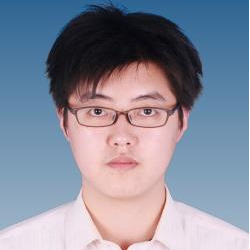Computational Imaging and Sensing Technology
A special issue of Sensors (ISSN 1424-8220). This special issue belongs to the section "Sensing and Imaging".
Deadline for manuscript submissions: closed (31 March 2023) | Viewed by 4564
Special Issue Editors
Interests: computational imaging; coherent diffraction imaging; synchrotron X-ray imaging; high resolution transmission electron microscopy
Interests: computational bio-imaging; noninterferometic phase retrieval; optical information processing; high-speed 3D optical sensing
Special Issues, Collections and Topics in MDPI journals
Special Issue Information
Dear Colleagues,
The field of computational imaging and optical sensing seeks to collectively exploit the capabilities of optics, electronics and advanced mathematical algorithms in realizing imaging capabilities beyond the traditional system based solely on optics. With the widely constructed large-scale light source capacity of short wavelengths, such as synchrotron and free electron lasers, computational imaging is rapidly evolving. Application areas for computational imaging and sensing range from materials science and biology to medical and defense industries. This Special Issue seeks to highlight the latest advances in computational imaging, emphasizing the integration of opto-electric measurement and algorithm development.
This Special Issue will focus on (but will not be limited to) the following topics:
- Novel lensless imaging methodology
- Microscopy (holographic, computational)
- Ptychography and phase imaging
- Spectral imaging
- Compressive sensing
- Ultra-fast imaging
- Machine learning in computational imaging
- Structured illumination
- Quantum computational imaging
- Depth-resolved and turbid imaging
- Quantitative fast 3D tomography
Dr. Fucai Zhang
Prof. Dr. Chao Zuo
Prof. Dr. Liangcai Cao
Guest Editors
Manuscript Submission Information
Manuscripts should be submitted online at www.mdpi.com by registering and logging in to this website. Once you are registered, click here to go to the submission form. Manuscripts can be submitted until the deadline. All submissions that pass pre-check are peer-reviewed. Accepted papers will be published continuously in the journal (as soon as accepted) and will be listed together on the special issue website. Research articles, review articles as well as short communications are invited. For planned papers, a title and short abstract (about 100 words) can be sent to the Editorial Office for announcement on this website.
Submitted manuscripts should not have been published previously, nor be under consideration for publication elsewhere (except conference proceedings papers). All manuscripts are thoroughly refereed through a single-blind peer-review process. A guide for authors and other relevant information for submission of manuscripts is available on the Instructions for Authors page. Sensors is an international peer-reviewed open access semimonthly journal published by MDPI.
Please visit the Instructions for Authors page before submitting a manuscript. The Article Processing Charge (APC) for publication in this open access journal is 2600 CHF (Swiss Francs). Submitted papers should be well formatted and use good English. Authors may use MDPI's English editing service prior to publication or during author revisions.
Keywords
- coherent diffraction imaging
- ptychography
- holographic microscopy
- compressive sensing
- tomography
- lensless imaging








